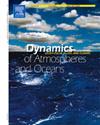Analysis of climate characteristics on the Tibetan Plateau based on mathematical statistics and vegetation response research
IF 1.9
4区 地球科学
Q2 GEOCHEMISTRY & GEOPHYSICS
引用次数: 0
Abstract
The Tibetan Plateau(TP)’s profound influence on East Asian atmospheric circulation and its indicative role in shaping global climate patterns have garnered widespread scientific interest. This study employs the statistical method of Rotated Empirical Orthogonal Function (REOF) analysis to conduct an objective climate regionalization of the TP. The plateau is subdivided into five regions, and a detailed analysis is conducted on the 73-year trends of precipitation, temperature, ground temperature, evaporation, and wind speed in each of the five subregions. The study reveals that, since the start of observations, precipitation in the northern TP has undergone a transition from high to low, followed by a gradual increase. In contrast, precipitation in the southern TP has shown a slight decrease in recent years. Both air temperature and ground temperature across the TP exhibit an overall oscillatory warming trend. Meanwhile, evaporation has decreased, and wind speed has declined across the entire plateau. The combined effects of precipitation, temperature, evaporation, and wind speed have led to a pronounced warming and wetting trend in the northern TP, while the southern region exhibits a warming and drying trend. This is closely related to the complex mechanisms driven by the interplay of westerlies and monsoons over the TP. Since 2003, changes in the vegetation index on the plateau have shown a strong positive correlation with precipitation, indicating that precipitation is one of the key factors influencing vegetation on the TP.
基于数理统计和植被响应研究的青藏高原气候特征分析
青藏高原(TP)对东亚大气环流的深远影响及其在塑造全球气候模式中的指示作用已经引起了广泛的科学兴趣。本研究采用旋转经验正交函数(REOF)分析的统计方法对青藏高原进行了客观的气候区划。将青藏高原划分为5个区域,详细分析了各区域73年降水、气温、地温、蒸发量和风速的变化趋势。研究表明,自观测以来,青藏高原北部降水经历了由高到低的过渡,然后逐渐增加。相反,南部青藏高原降水近年来略有减少。青藏高原的气温和地温总体上呈现振荡增温趋势。与此同时,整个高原的蒸发量减少,风速下降。降水、温度、蒸发和风速的综合作用导致青藏高原北部呈现明显的增湿趋势,而南部则呈现增干趋势。这与西风带和季风在青藏高原上的相互作用所驱动的复杂机制密切相关。2003年以来,青藏高原植被指数的变化与降水呈较强的正相关关系,表明降水是影响青藏高原植被的关键因素之一。
本文章由计算机程序翻译,如有差异,请以英文原文为准。
求助全文
约1分钟内获得全文
求助全文
来源期刊

Dynamics of Atmospheres and Oceans
地学-地球化学与地球物理
CiteScore
3.10
自引率
5.90%
发文量
43
审稿时长
>12 weeks
期刊介绍:
Dynamics of Atmospheres and Oceans is an international journal for research related to the dynamical and physical processes governing atmospheres, oceans and climate.
Authors are invited to submit articles, short contributions or scholarly reviews in the following areas:
•Dynamic meteorology
•Physical oceanography
•Geophysical fluid dynamics
•Climate variability and climate change
•Atmosphere-ocean-biosphere-cryosphere interactions
•Prediction and predictability
•Scale interactions
Papers of theoretical, computational, experimental and observational investigations are invited, particularly those that explore the fundamental nature - or bring together the interdisciplinary and multidisciplinary aspects - of dynamical and physical processes at all scales. Papers that explore air-sea interactions and the coupling between atmospheres, oceans, and other components of the climate system are particularly welcome.
 求助内容:
求助内容: 应助结果提醒方式:
应助结果提醒方式:


